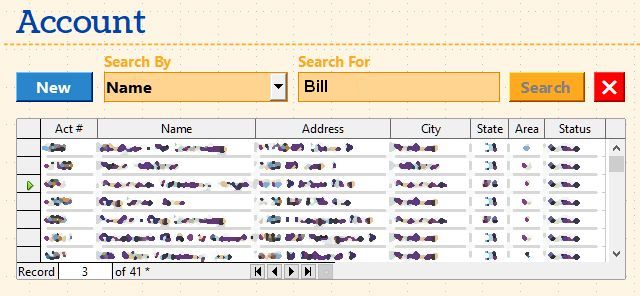I’m working on a home screen (aka switchboard) for my Base document that has button links to all the various forms of my database. In addition, there are search boxes with table control search results. My hope is to be able to write a macro to launch a record edit form when clicking on a row in the search results I can figure out everything except I don’t know how to access the active row (the one with the green triangle to the left). If I can detect which row is clicked, I can get the row’s ID and pass that as a parameter to the form I open. I already have that all figured out, just don’t know the part about active table row. Since button controls can’t be inserted into table controls, I can’t have a “open” or “edit” button for each row. The whole row needs to trigger on click. The search result table controls are read only, so I don’t need to be able to change any data in them.
Here’s a visual example of a search form. The search logic is already in place. I already know how to open a form via a macro. I just need an expert’s tip about how to determine the active table row via code, and therefore the “Act #” column of that active row in this case (because accountnumber is the primary key I will use to edit that record in the account form). I can search by any column (Act #, Name, Address, City, etc) to produce the search results… but I want the Act# of the clicked row.

